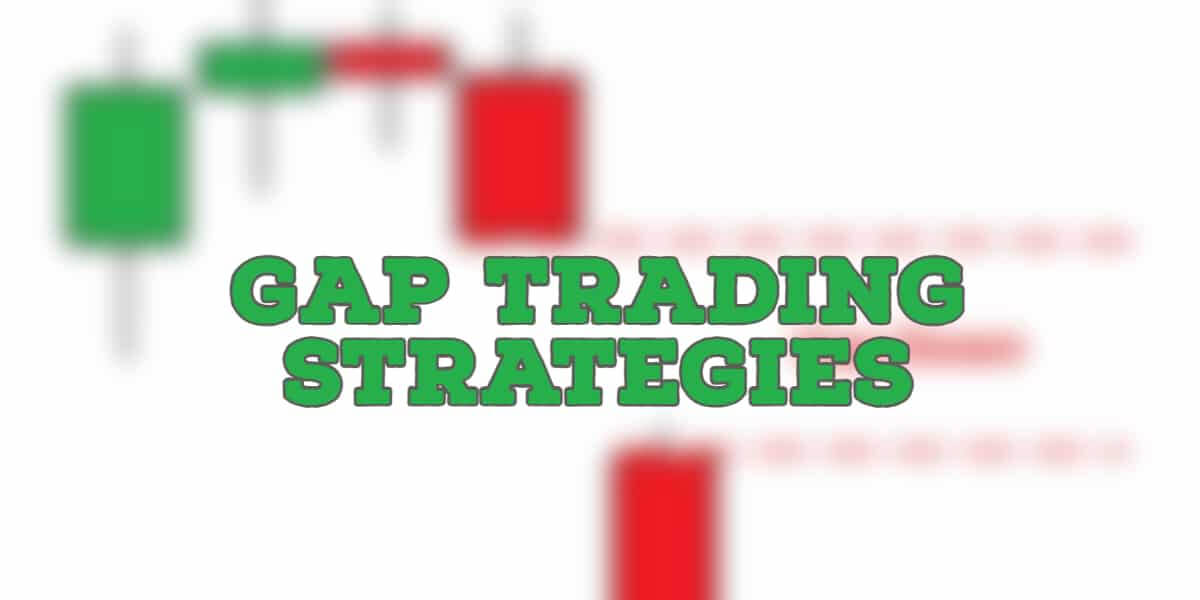
Gap trading strategies: What are Gaps and How to Trade Them?
When it comes to trading, it makes sense to have a trading strategy in your repertoire for each market you want to trade. Additionally, the strategy should also match your trading style. As a trader, for a positive earnings report, you don’t have to reinvent the wheel. Often it’s enough to fall back on relatively simple and proven approaches and implement them consistently. We will look closely at the Gap trading strategies in the following lines.
Gap basics
Traders can use technical indicators to spot winning trading opportunities, such as Fibonacci retracements or moving averages. These indicators can confirm a trader’s judgment or suggest positions. But the human eye can also play this role. A typical scenario is repeated in the financial markets many times. It is the gap, a special situation synonymous with a trading opportunity.
What is a gap in the analytics chart? Each financial market opens and closes for a given period. For example, the Forex market opens on Sunday evening and closes for the weekend on Friday evening. When the financial markets are closed, more or less strange events can occur and have the capacity to impact a market in question. If rumors or significant events take place during the weekend or during a daily closing, when the market opens, traders may rush and buy or sell the market in question en masse. This overreaction will create a “gap” in the market, a quotation hole represented by a large space on the graph between the closing and opening of the market in question.
Filling the gap
Therefore, the gap is a hole in the quotation that often forms at the stock market’s opening. It is generally profitable to trade to fill the gap. This strategy may seem risky, but the probability of success is important. Especially in markets that have low liquidity, like the stock market, gap-filling in forex is less likely to succeed.
Gaps are formed following an important economic figure, an event, or a merger between two companies. What matters is not the news but the reaction of the market.
We say the gap is filled once the price has returned to the pre-gap level. These fill actually happen due to the sharp fluctuations that are so sharp they don’t leave room for support resistance level.
Gap trading system – The types of the gap to know
There are four types of gaps to be aware of: the common gap, breakaway gap, exhaustion gap, and continuation gap. Let’s see in detail what these represent.
The common gap
It’s the most classic gap and the most encountered on the stock market. It occurs when minor events affect the movement of securities, with the price therefore rising or falling slightly. It is usually filled fairly quickly. This means that the gap is temporary. So, the value eventually falls back to the same level as that which preceded the gap, and the initial price is, therefore, quickly found.
Breakaway gap
As its name suggests, this deviation marks a clear change in trend and designates an unexpected and significant change in the behavior of investors. Large in scale and accompanied by high volumes, this type of gap is difficult to fill entirely. The breakaway gap announces a change in the underlying trend. By analyzing pre-open volumes and the size of the gap at the open, it is possible to understand the market’s reaction to economic news.
A large volume coupled with a large gap announces a breakout gap. The breakaway probability is enhanced if the breakout occurs on a chart pattern, such as a triangle or a support/resistance breakout.
The breakaway gap is not very common, but it often heralds the start of a trend reversal. Also, the breakaway gap is rarely filled and will act as support or resistance when the price returns near this level.
The continuation gap

Also known as the “runaway gap”, this type occurs when a strong trend already marks the market. It somehow confirms the current trend’s strength, which is marked by strong volumes. In an uptrend, the gap will logically be bullish. In a downtrend, it will, on the contrary, be bearish. As for the rupture gap, only a partial filling is generally possible.
The exhaustion gap
This gap appears at the end of the trend after a breakout and/or continuation gap. This type of gap fills quickly and confirms the beginning of a gradual trend reversal. It closes the current trend and reflects either the excess optimism of investors at the end of the uptrend or their excess pessimism in the event of a downtrend.
Trading against the gap
The most frequent gaps are generally small, so transaction volumes are low or normal. This type of gap does not announce a change in the underlying trend. Most of the time, it is completely or partially filled.
The strategy, therefore, consists of betting on filling the gap, i.e., taking a trade in the opposite direction. For example, with a long trade on a small bearish gap that forms in an uptrend.
The gap close strategy
Statistics show that price differences, or gaps, are very often filled in the more or less long term. The Gap Close trading strategy focuses on the price gaps between a closing price on Friday evening and the opening price on Sunday evening. The strategy tries to take advantage of those gaps that close quickly or within two days.
What impact on an investment strategy?
Several elements can cause a stock market gap. In many cases, the accumulation of significant liquidity between the close and the opening of the markets causes an insignificant difference, namely a common gap. Financial announcements, changes announced by financial analysts, the payment of dividends, or low liquidity in the financial markets may also be the cause.
If it is estimated that 90% of stock market gaps are filled, it is clear that they constitute a risk to be apprehended for traders. But the interest of these spreads is also to provide investors with indications on possible trend reversals, on the acceleration, or, on the contrary, the completion of a trend. Overall, the stock market gap is a phenomenon to study on a stock chart to obtain essential information on continuing an ongoing trend. It often becomes a relevant support or resistance area for investors.
By studying the frequency of occurrence of gaps and their average value, everyone can estimate the degree of risk and the best time to sell or buy, depending on the chosen strategy.
How to read a gap on a stock chart?
The gap corresponds to an absence of quotations between the two sessions. On a stock chart, the gap appears as a hole. For example, on Japanese candlesticks, a gap can be recognized by a discontinuity in prices. Thus, the highest quotations are lower than the lowest quotations of the previous session, or vice versa. Therefore, the closing and opening prices present a difference with the absence of selling and buying at intermediate prices. The successive candles that mark the gap are one well above the other, marking a jump in the price level. There is an empty zone between the two, which marks the lack of quotations between the two-time units represented by the candles. The gap can be bullish or bearish.
How do you find stock gaps? The simplest way to find gap stocks is using the market scanner. By researching stocks whose opening price exceeds or is less than the closing price on the previous day, you can find the good gap stock. You can also refine your research utilizing filters for determining the price gap’s scope.
Is it risky to start trading with gaps?

For a beginner trader faced with the volatility of stock prices, it is too risky to trade only with gaps. Indeed, the nature and causes of the differences being difficult to establish, it is better to rely on other indicators to make purchase or sale decisions. Graphical analysis, the notions of support and resistance, as well as bullish and bearish trends, represent less risky indicators and are more suitable for beginners.
Final thoughts
A market gap generally refers to the gap between the closing price of one trading session and the opening price of the following session.
But it can also be noticed during the session in certain very specific cases when market transactions stop suddenly after announcing important financial information or following a change in a financial analyst’s prediction by example.
In other words, the market gap, therefore, generally designates a quotation difference, i.e., the period of time during which no exchange takes place on security, with a change in the price of the quotation during the recovery.
Any stock market gap can only be observed on very specific stock charts, namely, bar charts and candlestick charts. However, this phenomenon cannot be identified on a continuous curve.
The stock market gap reveals a discontinuity in the evolution of prices and a sudden imbalance between supply and demand for securities. When the lowest value of a session is higher than the highest value of the previous session, we speak of a bullish gap, with prices tending to rise sharply. Conversely, it is a bearish gap if the high of a session is lower than the low of the previous session, with sellers who are then in a position of strength compared to buyers.




